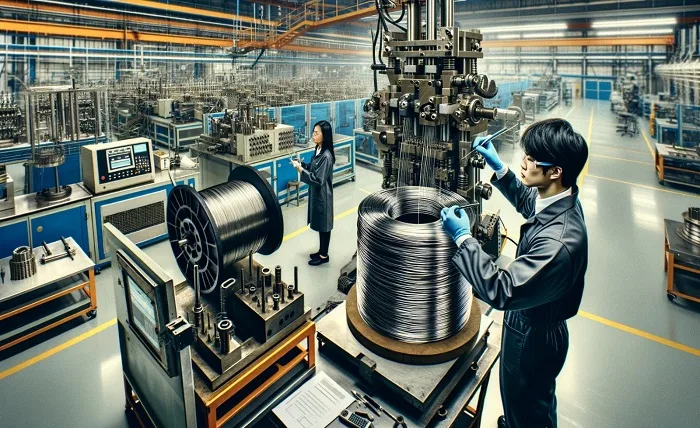Tungsten metal, known for its extraordinary toughness and high melting point, is used to create one of the most important components in lighting technology: the tungsten filament.
Extraction of Tungsten
The extraction of tungsten metal from its parent ores, wolframite and scheelite, is the first step in the journey of a tungsten filament’s creation. Tungsten is present in these ores in the form of tungstate. Through a meticulous mining and concentration process, the tungsten-containing ore is transformed into tungsten concentrate, which forms the basis for subsequent filament production.
Refining to Tungsten Powder:
In order to make the tungsten filament, the concentrate is refined into tungsten powder. This entails utilising either hydrogen or carbon to reduce tungsten trioxide (WO3), a yellowish chemical generated from the concentrate. The end result is a fine powder, which serves as the fundamental building block in the filament manufacturing process.
Tungsten Filament Formation:
To shape the tungsten powder into the proper shape for the filament, it is carefully treated through a series of stages. The powder is initially crushed by pressing, resulting in a densely packed mass. This mass is then sintered in a high-temperature environment, where the tungsten particles combine and form a solid, cohesive structure. The curved tungsten metal is then painstakingly pulled into a thin wire, forming the basic structure of the filament.
Strengthening Heat Treatment:
The newly created tungsten metal filament goes through an important heat treatment step to increase its strength and durability. This stage entails carefully regulating the temperature in order to release any tensions in the filament and optimise its mechanical qualities. As a result, a tungsten filament with high tensile strength is produced with the resilience to withstand the extreme conditions it will encounter during its service life.
Spiral Design Shape:
Tungsten filaments, which are at the heart of incandescent light bulbs, are frequently coiled into a characteristic spiral shape. This coiling serves several functions. For starters, it increases the luminance by maximising the length of the filament within the limited space of the bulb. Second,
the spiral design provides even heat distribution, which contributes to the filament’s endurance.
Incandescent Transformation:
The coiled tungsten metal filament is put within a bulb filled with an inert gas, commonly argon, which extends the filament’s life by decreasing evaporation. When an electric current travels through the filament, the resistance generates extreme heat, forcing the tungsten metal to reach temperatures high enough to cause incandescence, or the emission of visible light. This transformational process exemplifies brilliance of tungsten metal as it fulfills its role in brightening our surroundings while maintaining an impressive durability and longevity through its exceptional heat resistant properties.
Finally, the route from tungsten metal extraction to the dazzling brightness of a tungsten bulb demonstrates the astonishing qualities of this incredible metal. Each step of the process requires precision and craftsmanship, demonstrating the combination of science and innovation. As we continue to light our environment with tungsten metal filaments, it’s worth noting the radiance that this technology brings to our daily lives.



